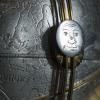I was waiting for the cleaning cycle to finish and I came across this board. Some of the posters are pretty serious and that is a pleasant thing to see.
I have been updating my website to highlight pages that may be of interest to the membership
http://historictimekeepers.com/Notes for Watchmakers.htm
http://historictimekeepers.com/Microscopes.htm
http://historictimekeepers.com/measurement_in_watchmaking.htm
I am trying to leave a trail of bread crumbs so that younger watchmakers do not have to learn the hard way like I did. I do need to put together a book list (Jendritski, Perkins, Whitney, Wild, Gazeley, the Argus Shop series, Sherline book, etc) that gets people away from relying on bad information or writers who leave Easter Eggs for the reader to figure out.
If people have a topic they would like me to add, let me know. My goal is to fill the space of how things are done which tends to be glossed over. For example, using an adjustable hotplate instead of an alcohol lamp for bluing and shellacking, etc. Things I have found that make life easier and increase the probability of success.
Regards,
Dewey


